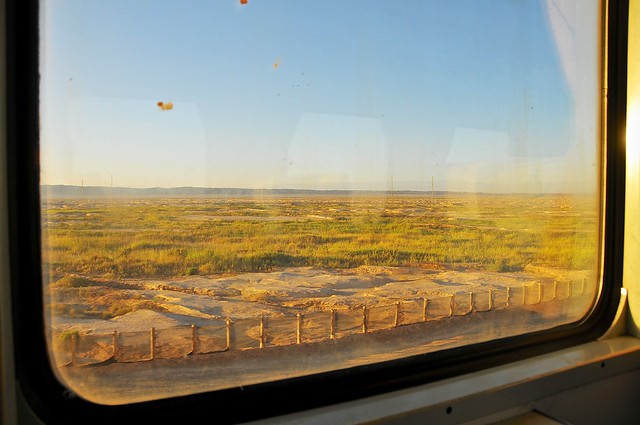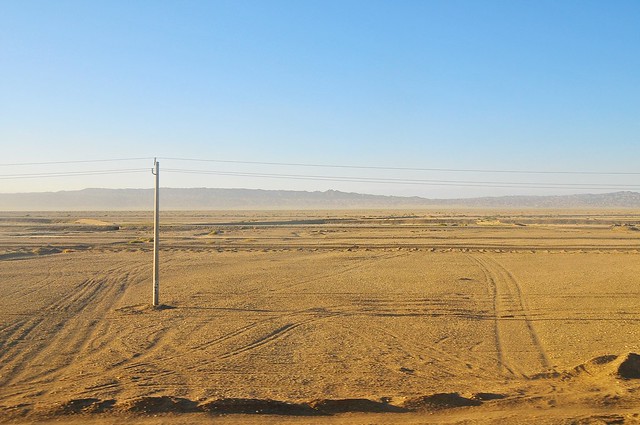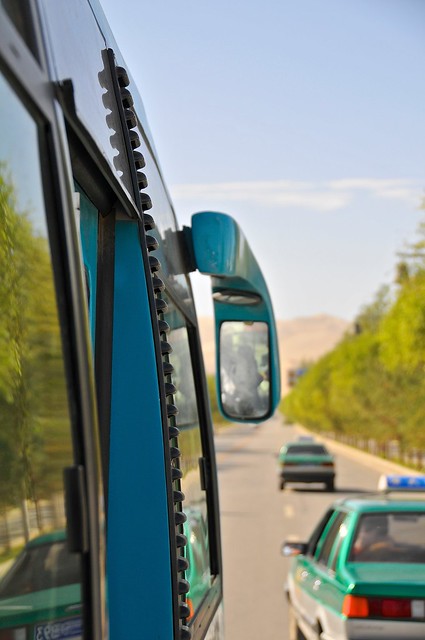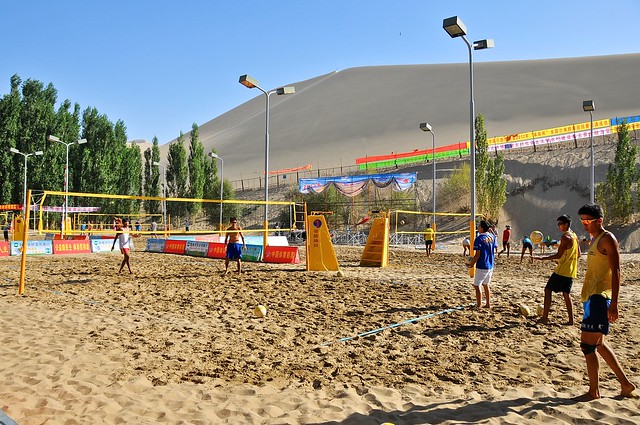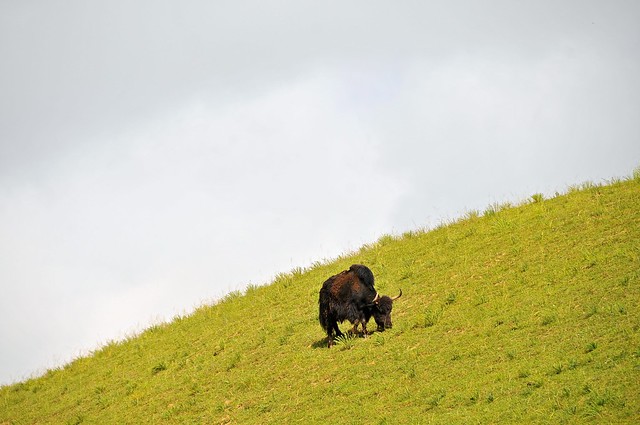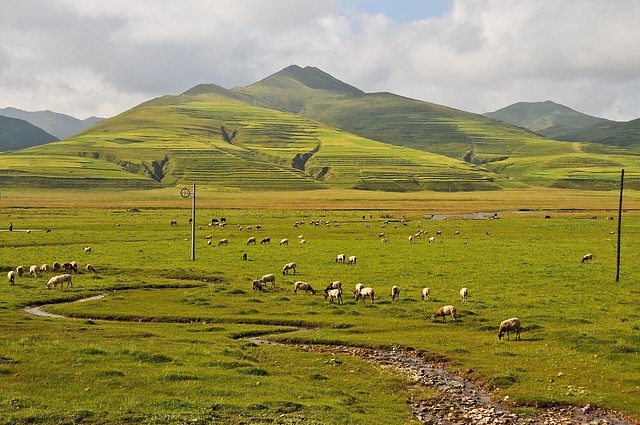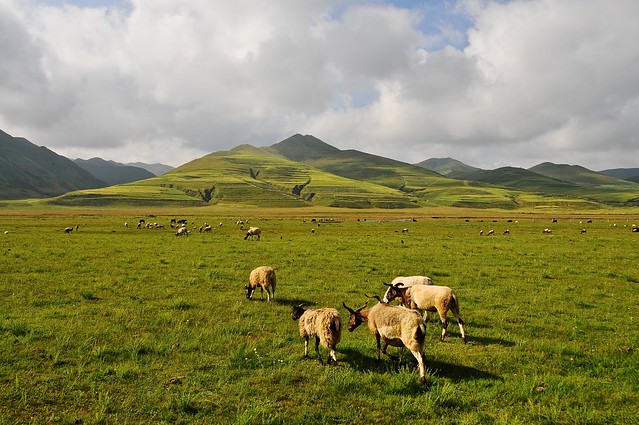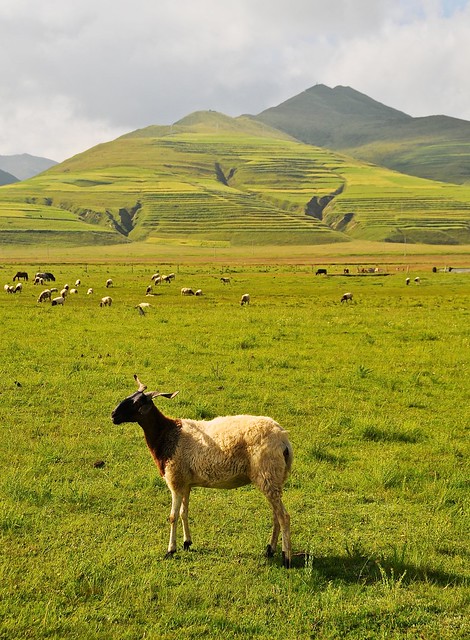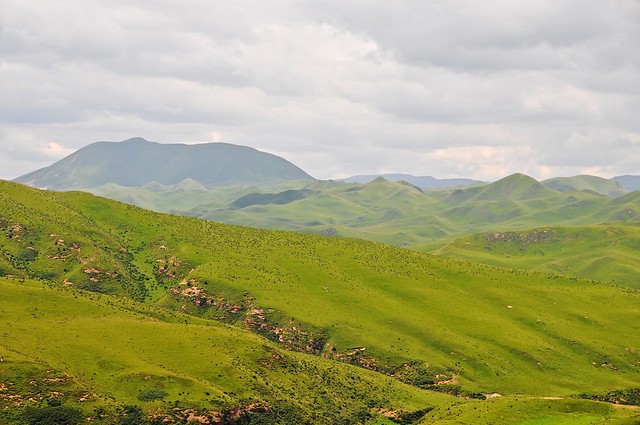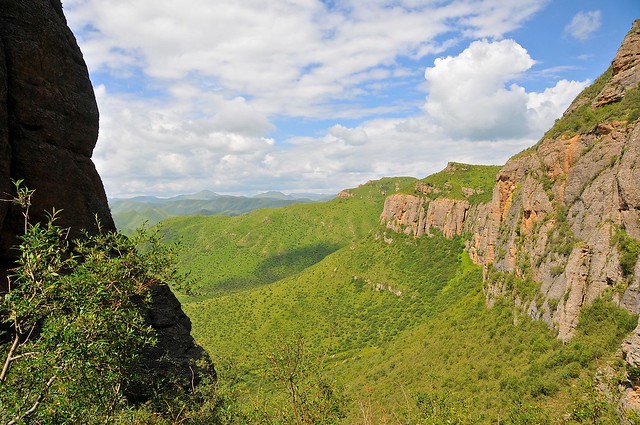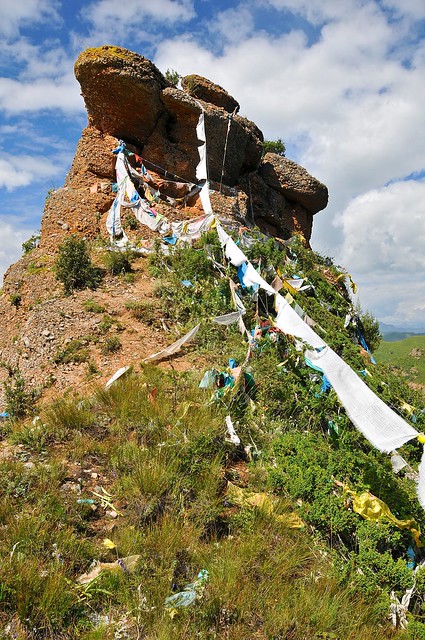Lanzhou: welcome to the west
I had no idea where I would go from Lanzhou: on the one hand, I thought I might want to take a trip up the Yellow River to the Buddhas and caves of Bingling Si, and/or make the sidetrip up to the town of Xiahe and the Tibetan Labrang monastery there. I thought I would figure it out in Lanzhou.
I arrived at the train station in the morning, and headed to the the Lanzhou Huar (Flower) Hostel. They weren't in any guidebooks, but I had picked up a pamphlet in Shanghai (I think), and found instructions to them. It took about an hour to get there by bus because the directions weren't the greatest, and when I arrived I was curtly told they don't accept foreigners. This was really strange, especially since they had the English-language pamphlets on their reception desk! They said it was because of government regulations, and they weren't very helpful about telling me if there were any other cheap places in Lanzhou. I asked if I could use their bathroom, and they said it would cost 10 yuan to do so! Not very impressive (especially since it seems they had lacked the necessary permit to accept foreigners since at least 2011, yet were advertising themselves to foreigners during this time); I really don't understand the inability of people in hospitality industries to be helpful when they have to turn people away.
I backtracked to the station, and looked for the cheap hotels listed in LP. No luck, as they were either closed or not accepting foreigners. I figured that since I wouldn't be able to stay in Lanzhou that Binling Si was out, and that I would head to Xiahe. Unfortunately, the bus station listed in LP had been torn down. Well, at least the LP was still right about where the train station was.
I then tried to go to an internet cafe and see if I could figure out where to catch the bus to Xiahe and how to get there. Except the government requires you to swipe your RFID-chipped ID card in order to get online, effectively shutting out foreigners from using the internet. Thankfully, the owner over-ruled the attendant and swiped me in with her own ID card, letting me go online.
I managed to find the location of the new Bus Station as well as the South Bus Station, and determined that there should be buses running to Xiahe into the afternoon. I went the the new Bus Station (a couple of blocks east on the road in front of the station), only to find that the buses to Xiahe only run from the South Bus Station. I hopped a city bus to the vicinity of the South Bus Station, then got off and wandered around until I eventually found it, and got a ticket to Xiahe in the early afternoon—about 7 hours after arriving in Lanzhou.
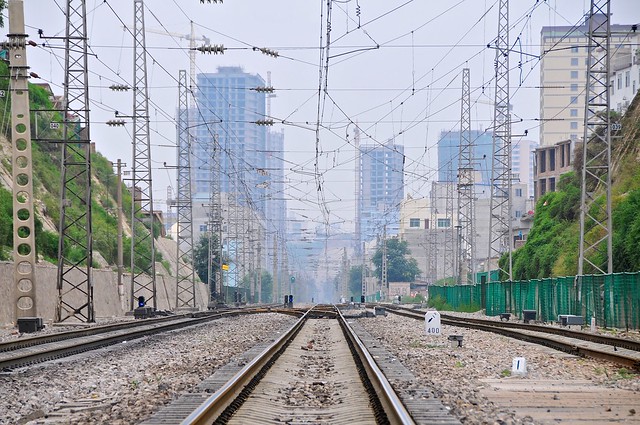 |
| Crossing the train tracks on my way to Lanzhou's South Bus Station (which is actually well west of the main train station, and near the Lamnzhou West Train Station). |
Although Lanzhou is already at an elevation of 1500 meters, the road steadily climbs to Xiahe, which is at 2900 meters. The road starts out running through dusty, dry mountains, completely devoid of vegetation except for small fields and trees planted by farmers. Then the road begins to climb in earnest, and the scenery turns decidedly green as it does. Lush fields and trees become the rule in the valleys between the increasingly-high mountains, but the biggest surprise being the abundance of new and impressive mosques that seem to pop up every few kilometers.
As we push higher and higher, the valleys narrow but the scenery remains quite green if not as lush. We stop seeing mosques, and before we know it we're pulling into Xiahe. The bus station is in the Chinese section of town, and the Tibetan quarter doesn't begin until a little further up the valley, so the introduction to the town is familiar. The closer you get to Labrang, the more Tibetan the town becomes.
As I arrived late—at around 5:00—all of the hostels were full. The Redrock Hostel said I could sleep on the floor (albeit at full price), so I ended up doing that. I thought their bathrooms—although appearing clean—were a little smelly, but it would turn out that by regional standards they were actually quite good.
Xiahe
Xiahe is home to the renowned
Labrang monastery, which is said to be the third-largest Tibetan Buddhist monastery in the world. It once housed 4,000 monks, and although that number has dropped to an official 1,500, some claim that there are actually about 2,000 monks studying there. Regardless, it's big and there are lots of monks, and even more pilgrims.
A
kora is a circuit that the devout walk around religious site, and you typically do it in a clockwise direction. Labrang has two
koras: an inner
kora that simply surround the monastery itself, and is lines with prayer wheels; and an outer
kora that runs along the mountain behind the monastery.
After leaving my stuff at the Redrock Hostel, I went out to explore Labrang for a couple of hours before it got dark.
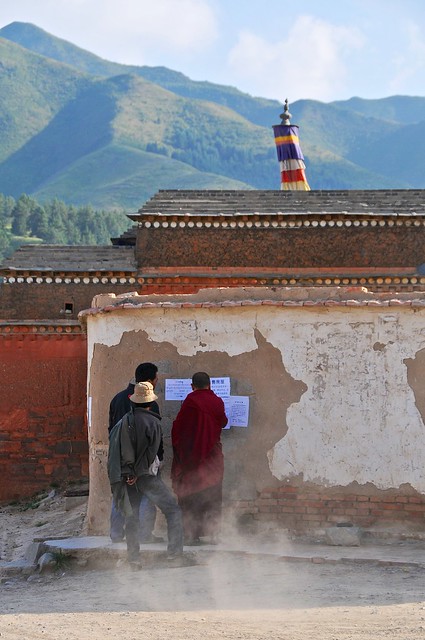 |
| Tibetans reading notices on a dusty street at the edge of Labrang. While the Chinese section of town is all paved streets and newer buildings, the Tibetan sections are (or were) in a much greater state of disrepair. |
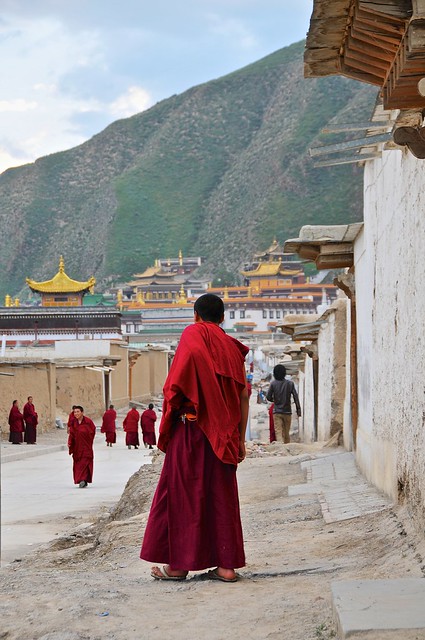 |
| Along the main street from town to the assembly hall. |
